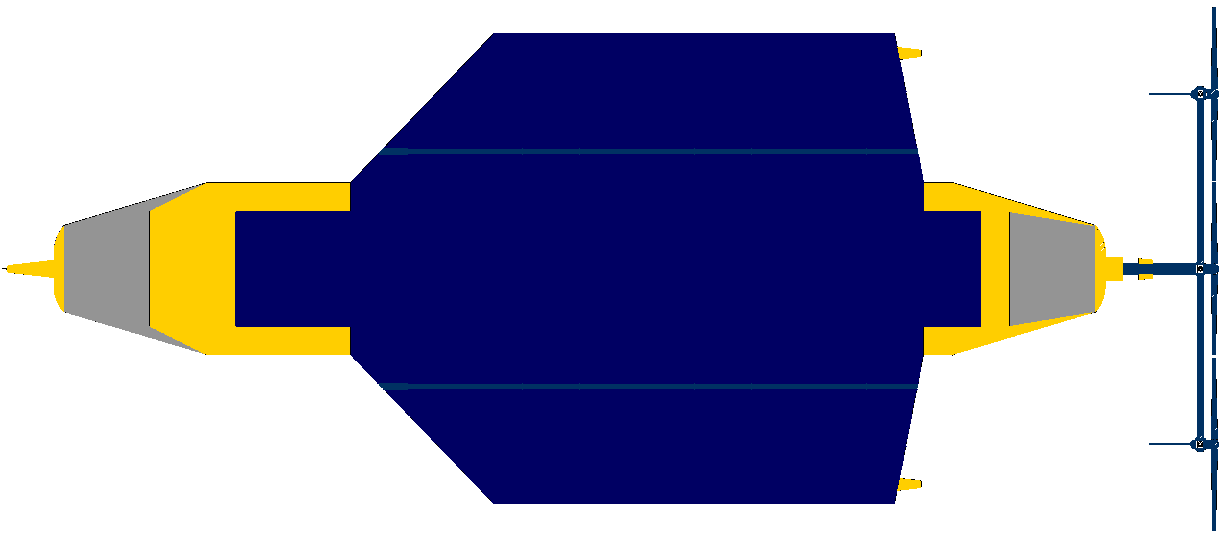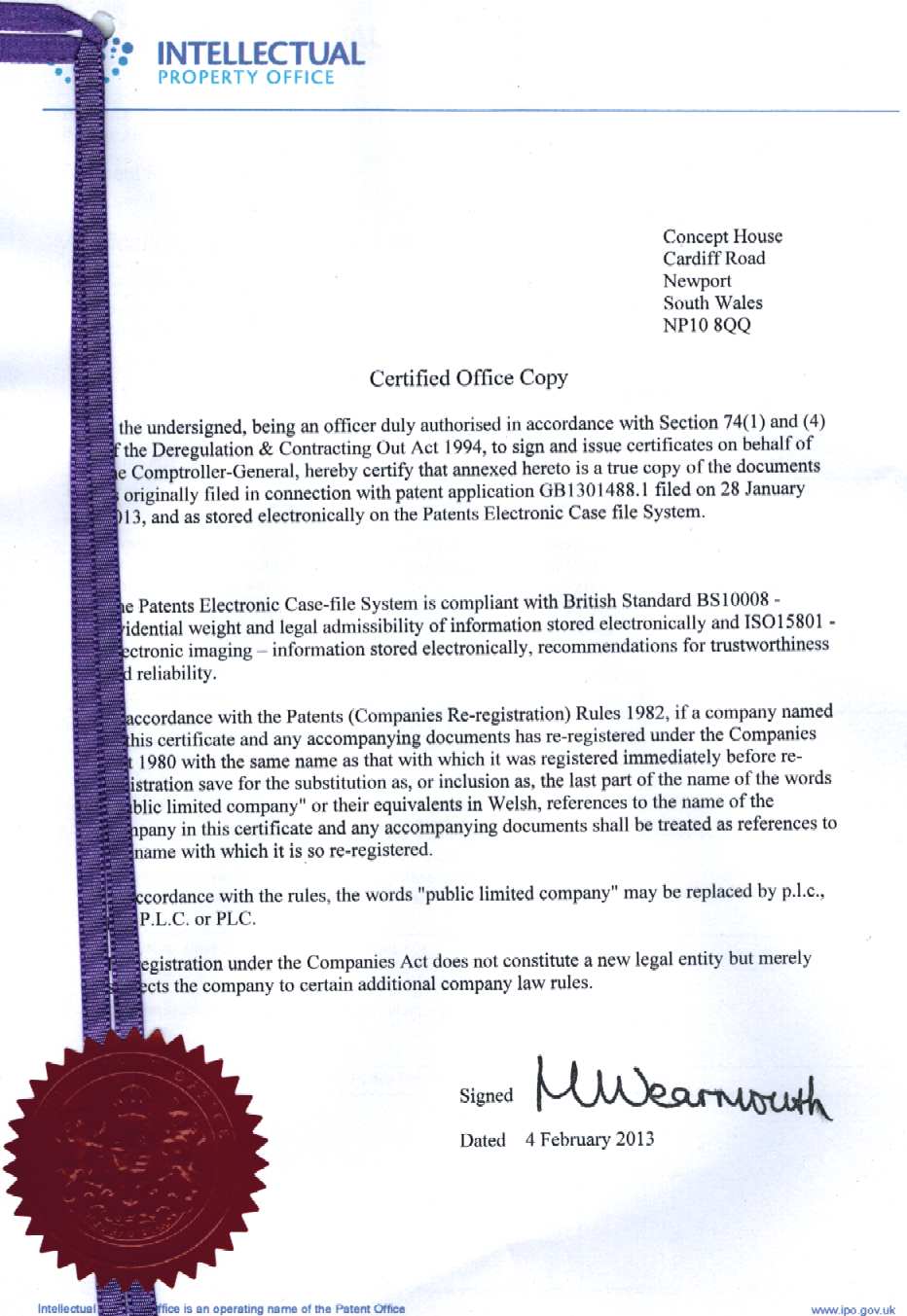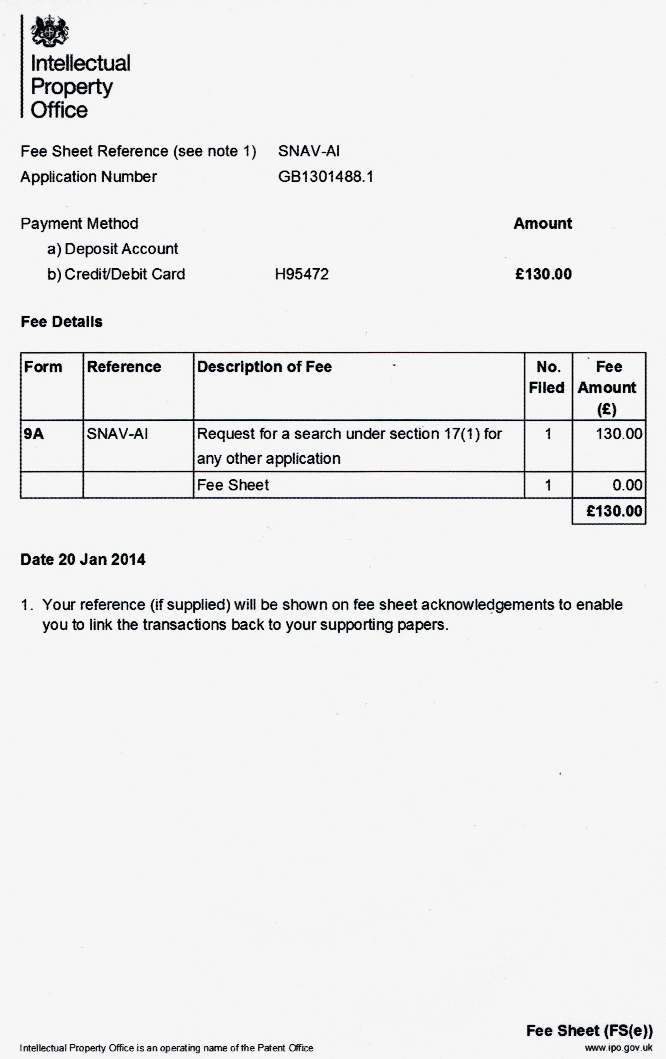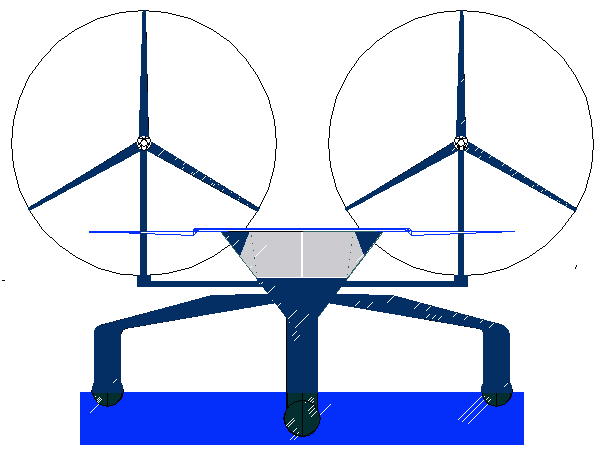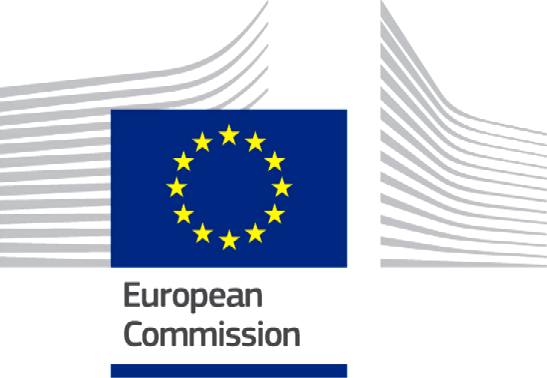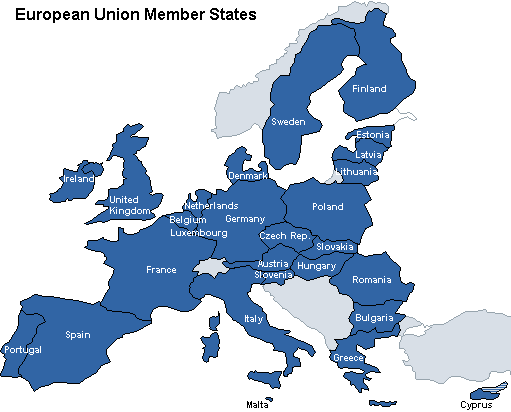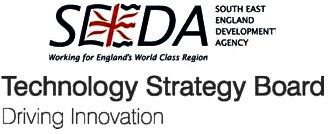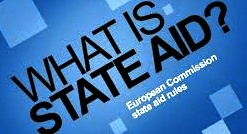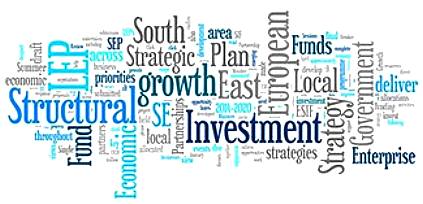This section of the guidance for applicants describes the funding rules which apply to the competition and your project.
|
HORIZON 2020 - Zero Carbon Marine Transport (ZCMT)
|
||||||||||||||||||||||||||||||||||||||||||||||||||||||||||||||||||||||||||||||||||||||||||||||||||||||||||||||||||||||||||||||||||||||||||||||||||||||||||||||||||||||||||||||||||||||||||||||||||||||||||||||||||||||||||||||||||||||||||||||||||||||||||||||||||||||||||||||||||||||||||||||||||||||||||||||||||||||||
|
CCC CHALLENGER - This is a draft design for the 'Climate Change Challenger,' a zero carbon ship concept that may be up scaled to larger cargo and cruise vessels. If the concept is proven, it could provide a way for the IMO to reach their zero carbon objectives for 2050 and 2100.
TRANSIT EXAMPLES - The above table illustrates one of the most likely ocean awareness expedition routes that could be undertaken by the Elizabeth Swan, showing the time elapsed in days for 7 knots average cruising speed, including times for 5 and 6 knot averages - allowing for 10% downtime and 36 days in ports. Hence, although the objective is to reduce the current solar circumnavigation record from 584 days, the event in not an outright non-stop yacht competition in the offshore racing sense. It remains to be seen how accurate such a prediction might be.
2. Where one axis uses the next generation of solar panels to track the sun for maximum conversion of light to electrical energy. 3. Where another axis uses the next generation wind turbine generators to convert wind as a vector into electrical energy. 4. The proposed research combining the main energy harvesting methods into a dedicated hull design, such as to achieve low running drag and safe automatic controls of ship systems as may eventually improve navigation - but that navigation in not within the scope of this present proposal. 5. Where the proposed research also embodies a transmission system and motor(s) that allows engine options to be engaged at will to suit desired running speed with maximum efficiency. Also including variable propeller technology in certain applications.
The above involves six areas of research:
A. Ship hull design and structural research B. Solar panel design and controls C. Wind turbine application and control D. Electric motor drive efficiency E. Autonomous functions (tracking) for effective energy management F. Integration with onboard energy (battery) storage systems
INNOVATION -
ENERGY AUTONOMY
002001 Design and
Modeling / Prototypes
PARTNERS
SOUGHT
* Wind turbine and PV panels manufacturers.
* Commercial boat and ship builders.
* Electric motor and battery producers.
HORIZON CONSORTIUM BUILDING 2014
GB 1301488 PATENT DETAILS (not available outside NDA as yet)
Interested
parties will need to sign a Non Disclosure Agreement to view the patent
details and receive details of the proposed initial design the subject
of this present research. Our standard form on NDA is available on
request, following an expression of interest.
LEAD PATENT - Patent progress 2013 - 2014, the lead application has now passed to the Search stage, as of 20 January 2014. As a SME without unlimited resources, this strategy is the logical next step in developing the IP for our technology partners. Research that we hope to secure funding for in the next 12 months is sure to lead to International improvement patents as specific new markets are identified. Our path to commercialization is based on a track record of IP grants, to be shared with collaborating concerns on a free basis.
FINDING FUNDING
Sadly, you will find a bewildering array of potential funding streams, most of which are not applicable and so will lead nowhere, but sap the will to live. Obviously, the EU and member states mean well, but as you can see from the selection of calls and so-called incentives below - it is actually a minefield that may well end up costing you more than you might reasonably secure for any project. The schemes are designed for academics to win, with specialist departments funded by initiatives for academic institutions to support bids from academics - typically working with large and established corporations that do not need the money. Good luck!
The Bluefish ZCMT concept is aimed at producing enabling technology for Zero Emission Vessels (ZEVs or ZCCs) of the future. ZCMT theory is based on a lightweight SWASH hull design that is extremely stable, upon which it is hoped to develop this concept in Europe via collaborative research with academia and industry. A consortium is currently being formed, the details of which are presently confidential, but you can follow progress on the chart below. We are not at present being funded for this activity.
The theory is that a ZCMT vessel need not use diesel fuel to traverse the oceans at relatively high speed 24/7 and 365 days a year if required. 7-10 knots average cruising speed is the target, hoping for 10 knots once refined. The enabling dual-axis harvesting technology as applied to a SWASH hull is yet to be tried in any form to be able to proceed to a feasibility study and from there to industrial research. Collaborative research will be essential at almost every stage before a prototype might finally hit the oceans.
Broad estimations suggest that a vessel of this design will pay for itself in fuel saved every ten years. The bigger the vessel, the more fuel is saved. With rising bunker prices the economics of operation are favorable, apart from green politics now playing an active role.
(DRAFT 18/10/2013)
HORIZON 2020 – WORK PROGRAMME 2014-2015 Smart, green and integrated transport
- Part 11 4. WATERBORNE
Solutions that are sufficiently close to market take-up so that ship owners will consider these concepts in their future investment plans should be demonstrated. This applies in particular to the existing fleet and retrofitting solutions which must be cost-effective and present a considerable societal return on investment.
TRANSLATION INTO RESEARCH FUNDING CALLS
The above draft extract from 2013 translates into these calls:
Horizon 2020 dedicated SME Instrument - Phase 1 2014H2020-SMEINST-1-2014Sub call of: H2020-SMEInst-2014-2015
Topic: Supporting SMEs efforts for the development - deployment and market replication of innovative solutions for blue growth BG-12-2014-1
Specific challenge: The potential of Europe’s Oceans, seas and coasts is significant for job and growth creation if the appropriate investments in research and innovation are made. SMEs contribution to the development of the 'Blue Growth Strategy' (COM (2012) 494) can be significant in particular in the fields of marine biotechnology (related applications, key tools and technologies) as well as aquaculture related marine technologies and services.
and
Specific challenge: The European transport sector must have the capacity to deliver the best products and services, in a time and cost efficient manner, in order to preserve its leadership and create new jobs, as well as to tackle the environmental and mobility defies. The role of SMEs to meet these challenges is critical as they are key players in the supply chains. Enhancing the involvement of weaker players in innovation activities as well as facilitating the start-up and emergence of new high-tech SMEs is of paramount importance.
RULES - APPLICABLE TO THE ABOVE CALLS
Scope: The SME instrument consists of three separate phases and a coaching and mentoring service for beneficiaries. Participants can apply to phase 1 with a view to applying to phase 2 at a later date, or directly to phase 2.
NOTE: This level of funding is insufficient to support cutting edge disruptive technology research by SMEs, especially those recently formed for R&D, where there is no commercial funding for high risk ventures - and where state of the art commerce, is likely to resist change.
Let's
complicate the hell out of this, never mind that funding for R&D is
diluted
A UK company is part of a consortium of UK members seeking a European partner to join a Horizon 2020 funding bid. The aim is to develop a novel low-drag hull. They are seeking industrial partners in the shipbuilding industry to co-develop the innovation to proof of concept and to create a demonstration prototype. They are also seeking potential end users, such as supply ships.
Applicant type, size and activity You may be eligible to receive different rates of funding depending upon the type and size of your organisation and the activity that you are doing in the project. For competition funding purposes, you will apply as: BusinessThe Technology Strategy Board provides funding for projects which are led by business. The principal objective of the support is to stimulate R&D and innovation activity, encouraging businesses to develop innovative products, processes and services with future commercial potential.
Business applicants, which includes industry and all other organisations that do not qualify as Research Organisations, or Charities/Public Sector Organisations undertaking research, will be able to have their individual eligible costs funded at the following rates:
Please see section 2 below for research category definitions.
The definition of micro, small and medium-sized enterprises (SMEs) used by the Technology Strategy Board is contained in the European Commission Recommendation of 6 May 2003 concerning the definition of micro, small and medium-sized enterprises (2003/361/EC), which took effect on 1 January 2005 or any subsequent definition provided by the Commission. This can be found at:
Research OrganisationsWhen referring to 'Research Organisations' (RO) the Technology Strategy Board uses the definition from the Community Framework for State aid for Research and Development and innovation -
"Research Organisation" means an entity, such as a university or research institute, irrespective of its legal status (organised under public or private law) or way of financing whose primary goal is to conduct fundamental research, industrial research or experimental development and to disseminate their results by way of teaching, publication or technology transfer.
All profits must be reinvested in these activities, the dissemination of their results or teaching. Undertakings that can exert influence upon such an organisation, for instance in their capacity of shareholders or members of the organisation, shall enjoy no preferential access to the research capacities of such an organisation or to the research results generated by it.
Research Organisations undertaking non-economic activity will be funded as follows:
For Technology Strategy Board competitions this means:
where the organisations meet the definition of RO as stated above and where they are undertaking non-economic activities.
To receive funding at this level, Research Organisations will have to be non-profit distributing, and ensure they disseminate the outputs of their research relating to the project, and state in the application how they are going to do this.
Please note: Where Research Organisations are engaged in economic activity as part of the project, they should apply and will be treated as business enterprises and the aid granting conditions will be the same as those applicable to business.
See State Aid section for information on economic and non-economic activity.
Full Economic Cost (FEC) and Joint Electronic System (JeS)
Universities and other Research Organisations registered on the JeS system submit their costs through this system using an approved research costing methodology. The costs submitted and approved through the JeS system should then be input onto the specific Application and Finance Forms for submission into the competition.
Please note:
* Universities and other HEIs must continue to use the JeS system * Other Research Organisations registered on JeS should continue to use that system where they are applying as academic institutions for non-economic project activity and where their costs are required to be submitted in that format * For JeS applicants, only 80% of the FEC is allowable as eligible costs. The remaining 20% is not considered to be a contribution from the Research Organisation to the project and should not show on the finance table or forms.
Research costs submitted through the JeS system must be in line with the business and research participation rules. Public sector organisation or charity doing research activity
There are a number of charities and public sector organisations, for example, medical research charities, NHS Trusts and Local Authorities, that may work with business in delivering innovation. They do this by providing knowledge, skills and resources. Where such organisations are not undertaking economic activity or obtaining economic benefit from a project, and where they are not giving economic benefit to other project participants, they are able to apply for 100% grant funding for their eligible project costs if they:
* are undertaking research (see below), and * meet the requirements for dissemination of their project results, and * state in the application how they are going to do this.
Please note:
* research activity may be taken to be experimental or theoretical work or critical investigation aimed at the acquisition of new knowledge and skills or to research a new understanding for developing new products, processes or services; * where charities and public sector organisations are undertaking research within a project, their eligible costs should be included in the total research organisation involvement for the purposes of meeting the participation rules; * the organisation should also ensure that it is not applying for grant towards costs, for example, overheads, that are already funded by the public purse as part of its normal activities or as part of another public-funded project.
See State Aid section for information on economic and non-economic activity.
Category of Research & Development The category of R&D activity will be specified in the competition scope, as explained in the competition brief and the guidance document. In applying to the competition, your project should fall within this specified category of research and development. The Technology Strategy Board supports the following categories of research and development:
Projects that span more than one category of research
Fundamental Research
This means experimental or theoretical work undertaken primarily to acquire new knowledge of the underlying foundations of phenomena and observable facts, without any direct practical application or use in view.
Industrial Research
This means the planned research or critical investigation aimed at the acquisition of new knowledge and skills for developing new products, processes or services or for bringing about a significant improvement in existing products, processes or services. It comprises the creation of component parts to complex systems, which is necessary for the industrial research, notably for generic technology validation, to the exclusion of prototypes. Experimental Development
This means the acquiring, combining, shaping and using of existing scientific, technological, business and other relevant knowledge and skills for the purpose of producing plans and arrangements or designs for new, altered or improved products, processes or services.
These may also include, for instance, other activities aiming at the conceptual definition, planning and documentation of new products, processes or services. The activities may comprise producing drafts, drawings, plans and other documentation, provided that they are not intended for commercial use.
The development of commercially-usable prototypes and pilot projects is also included where the prototype is necessarily the final commercial product and where it is too expensive to produce for it to be used only for demonstration and validation purposes. In case of a subsequent commercial use of demonstration or pilot projects, any revenue generated from such use must be deducted from the eligible costs.
The experimental production and testing of products, processes and services shall also be eligible, provided that these cannot be used or transformed to be used in industrial applications or commercially.
Experimental development shall not include routine or periodic changes made to products, production lines, manufacturing processes, existing services and other operations in progress, even if such changes may represent improvements.
Technical Feasibility Studies
The objective of technical feasibility study research is to assist business to work, either individually or collaboratively, with other industrial or research organisations on Research & Development that requires an initial study prior to embarking on a subsequent and larger R&D project. These studies are considered to be further away from the market than the project itself, and therefore higher aid intensities apply.
The Technology Strategy Board supports two categories of Feasibility Study research:
The competition scope will define the requirements for the feasibility study, including the area of research and development as well as the expected size and duration of the study. Projects that span more than one category of research
The competition scope will specify in which category of R&D the project must sit. However, there may be a need for some projects to include work packages which represent more than one category of research. For example, some may include a range of Industrial Research and Experimental Development. In this case, you should identify:
1. where the project predominantly sits (ie where more than 50% of the eligible costs will be incurred), and
2. where the other work packages in the project fit within each category of research, and
3. that the project still meets the scope of the competition, and
4. apply for a grant commensurate with the aggregated work packages.
You should then:
1. Identify the main category, e.g. Industrial Research, where the project predominantly sits in the appropriate field on the first page of the Application Form
2. Calculate the appropriate level of funding for the total project. e.g. for a large company if 80% of a project is Industrial Research and 20% Experimental Development, as defined by work package costs, the total eligible level of funding is 45% of total eligible project costs (80% @ 50% = 40%, and 20% @ 25% = 5%)
The Assessors will judge if the project fits the category of R&D, and that the work packages are correctly assigned across the research and development categories.
If the Assessors judge that they are not correctly assigned, the Technology Strategy Board will adjust the grant percentage accordingly.
It is rarely the case that a single project contains all three categories of research.
STATE AID
State aid as defined by the European Community (EC) Treaty is financial aid that has the following characteristics: It
The Treaty allows a certain level of State aid within an approved framework, associated funding limits and criteria.
The Technology Strategy Board operates competitions within an approved scheme. This can be found at: http://www.innovateuk.org/deliveringinnovation/state-aid.ashx
You are responsible for making sure that we are given the correct information that allows us to award grants within our scheme.
If there is a breach of State aid, the European Commission would require the project participants to repay any grant received, including interest, above that which was due. In a consortium project, the Collaboration Agreement should make provision for this possibility. Non-economic activity
In most cases, the primary activities of Research Organisations are normally of a non-economic character, notably:
Technology transfer activities (licensing, spin-off creation or other forms of management of knowledge created by the research organisation) are of non-economic character if these activities are of an internal nature and all income from these activities is reinvested in the primary activities of the Research Organisation.
Where public sector organisations and charities are involved in a project, they will need to demonstrate that the work they will be doing qualifies as non-economic research activity to be treated as a research participant.
State aid, as defined by the European Community (EC) Treaty, is financial aid that has the following characteristics: It
The Treaty allows a certain level of State aid within an approved framework, associated funding limits and criteria. The Technology Strategy Board operates competitions within an approved scheme. This can be found at: http://www.innovateuk.org/deliveringinnovation/state-aid.ashx
You are responsible for making sure that we are given the correct information that allows us to award grants within our scheme.
If there is a breach of State aid, the European Commission would require the project participants to repay any grant received, including interest, above that which was due. In a consortium project, the Collaboration Agreement should make provision for this possibility.
Economic activity
Where non profit distributing RTOs, Catapults, Public Sector Research Establishments, Research Council Institutes, charities and public sector organisations are involved in a project where they are undertaking economic activities, they will need to do so as an industrial partner.
They will, therefore, be required to provide the appropriate match funding for the project or will need to act as a sub-contractor. This would include, for example, projects where they do not plan to disseminate their results, or where they are not planning to reinvest the income from these activities in the primary activities of the research organisation.
RTOs operating on a ‘profit distributing' basis will always be considered to be an industry partner.
The Community Framework for State aid for Research and Development and Innovation makes the following reference to the public funding of economic activities -
‘If research organisations or other not-for-profit innovation intermediaries (for example, technology centres, incubators, chambers of commerce) perform economic activities, such as renting out infrastructures, supplying services to business undertakings or performing contract research, this should be done on normal market conditions, and public funding of these economic activities will generally entail State aid'.
Please note:
|
|
National Contact Persons HORIZON 2020
Mr. Cliff FUNNELL United Kingdom - Horizon - National Contact Point, Transport NCP
Mr. Chris BARKER United Kingdom - FP7 - National Contact Point, Environment NCP
Ms Jo FROST United Kingdom - FP7 - National Contact Point, Ideas NCP
|
EUROPEAN STRUCTURAL & INVESTMENT FUND
Background to European Structural and Investment Fund Strategy
Having
access to both the South East European Structural Investment Fund
programme and the Single Local Growth Fund provides LEPs with the
opportunity to draw together resources from both Europe and at home to
deliver the priorities for delivering economic growth outlined in South
East Strategic Economic Plan.
The SE LEP EU Structural Investment Fund Strategy (SIF) is aligned to the
priorities of the SE
LEP Strategic Economic Plan.
In April 2013, Ministers wrote to Local Enterprise Partnerships to confirm
that EU Structural and Investment Funds (SIF) for 2014-2020 will be
allocated to Local Enterprise Partnerships to direct investment and
deliver local growth strategies. Each LEP was asked to set out their
priorities for this funding through an European Structural and Investment
Fund Strategy (ESIF), linked to their Strategic Economic Plan (SEP) by
October 2013. The details of investments are to be prepared throughout the
Autumn 2013 and a final submission made to Government in January 2014.
Background to European Structural and Investment Funds
European Structural and Investment Funds are designed to improve economic growth and social wellbeing across Member States. All Member States receive some form of assistance. The Structural Funds (ERDF and ESF) cover a wide range of activities, all designed to improve economic competitiveness and employment. In April 2013, Ministers wrote to Local Enterprise Partnerships to confirm that European Structural and Investment Funds (ESIF) for 2014-2020 will be allocated to Local Enterprise Partnerships to direct investment to deliver local growth strategies. The UK Government invited Local Enterprise Partnerships to develop strategies for how it will invest European Structural and Investment Funds for the period 2014-2020 in their local areas. The South East LEP has been notionally allocated approximately £165 million of ESIF which is for both ERDF and ESF allocations. EARDF (rural programme) funding allocations are to be announced shortly.
The
LEP has three key roles in this work
1. Lead
the development of an European Structural and Investment Funds Strategy,
2. Consult and engage all interested parties, including rural
interest.
3. Develop a pipeline of compliant projects which deliver the
strategy from late 2014 onwards.

SE-EP CONTACTS
South East LEP Secretariat
c/o Essex County Council
County Hall
Market Road
Chelmsford
CM1 1QH
Tel: 01245 431469
Email: lep@essex.gov.uk

The European Technology Platform WATERBORNE is a forum where all stakeholders from the waterborne sector (sea & inland) define and share a common Vision and a Strategic Research Agenda, driving the necessary innovation efforts forward.
MARITIME EUROPE STRATEGY ACTION (MESA) is supporting WATERBORNE TP
WATERBORNE TP is an initiative that came forth from the Maritime Industries Forum (MIF) and its R&D committee in 2005 and is making strident efforts to regularly update R&D requirements for European competitiveness, innovation and the meeting of regulations like safety and environment. The stakeholders include EU associations covering deep and short sea shipping, inland waterways, yards, equipment manufacturers, marine leisure industry, research and university institutions, classification societies etc. The so-called stakeholder Support Group is matched by a Mirror Group of government appointed delegates.
The WATERBORNE TP is one of the some 30 technology platforms in the EU and where appropriate possibilities for exchanges or other ways of cooperation are investigated.
The WATERBORNE TP published a VISION 2020 paper in 2005, a Strategic Research Agenda in 2006 and an Implementation Plan in 2007. In 2011 the WATERBORNE Declaration has been published as position paper for HORIZON2020. Strategic Research Agenda and Implementation plan have been revised in 2011 and the renewed VISION2025 document has been published. The contents are been used by industry sectors, national R&D programs and not in the last place by the European Commission for defining the outline of and calls under the R&D Framework Programs.
Maritime Europe Strategy Action (MESA - FOSTER WATERBORNE), main strategic objective (in line with WATERBORNE-TP) is to strengthen the effectiveness of the research and innovation capacities of the European maritime industry, by:
* Optimization of the European maritime RDI strategies;
* Improvement of the stakeholders network, of the dissemination, of the use of the research results, and increasing the visibility of the R&I findings;
* Fostering the definition of the maritime R&I transport policies.
MESA, is :
(1) providing support to the WATERBORNE TP work, enlarging and maintaining it,
(2) identifying 4 major themes (implemented via Thematic Technology Groups on Energy Efficiency, Safety, Production, E-Maritime) performing an in-depth analysis and assessment of the achievements at EU and National level, to foster future strategic lines in research and innovation,
(3) updating the strategic research agenda and creating an innovation agenda contributing to close the gaps between research and market uptake,
(4) enhancing a network for the exchange of ideas and priorities,
(5) acting as major player for dissemination raising waterborne value chain profile and visibility in Europe.
Foresight activity will provide market, societal and regulatory trends studies, contributing to transport RDI policies.
An Integration Group will issue Strategic documents for the waterborne sector: VISIONS2030, Strategic Research Agenda, Innovation Agenda, Implementation Plan, homogenizing findings of the Thematic Technology Groups and the Foresight.
A comprehensive communication strategy will be implemented including coverage of the TRA2014, 2016, Technology Workshops, Major Conferences, Newsletter, Brokerage Events, Show Cases of successful projects, TRIP liaison, etc. MESA involves 28 partners, (industrial, research, education, associations) ensuring the widest possible participation accustomed to work together since many years, in the majority of EU projects and in the WATERBORNE-TP.
LINKS
TEN-TEA - Trans European Transport Network Excecutive Agency
MIF - Maritime Industries Forum
EMSA - European Maritime Safety Agency - European Commission Agency
DG TRADE - DG TRADE - European Commission
DG RESEARCH - DG Research Directorate General - European Commission
DG MOVE - European Commission DG MOVE (Transport)
DG MARE - DG MARE - Directorate General for Maritme Affairs and Fisheries - European Commisssion
DG ENVIRONMENT - DG ENVIRONMENT - European Commission
DG CLIMATE ACTION - DG CLIMATE ACTION - European Commission
Use the Maritime Transport Research Database (MTRD)
www.maritimetransportresearch.com
"Use the Maritime Transport Research Database (MTRD)
for information on maritime transport research projects and to publicize
your relevant work. Check in and register to post your new project, or
provide updates on new developments and outcomes of existing
projects."
FPs' website - Commission’s website on Frame Work Research Programmes
Europe Innova - Europe Innova - Partnership for better innovation suport
ETPs website - Commission’s website on European Technology Platforms , CORDIS
EC European Research Area - The role of community research policy in the knowledge-based economy
TRIP - Transport Research and Innovation Portal
TP WIND - European Technology Platform for Wind Energies
WP 07 - INNOVATION in SMEs; SME INSTRUMENT
|
- Conditions common for this call - reference documents
Publication date: 11 Dec 2013
Opening: 1 March 2014 for phase 1 and 2
Deadlines:
|
|
Topics and submission service
* Specific Challenge: SMEs play a crucial role in developing resource-efficient, cost-effective and affordable technology solutions to decarbonise and make more efficient the energy system in a sustainable way. They are expected to strongly contribute to all challenges outlined in the legal base of the Horizon 2020 Societal Challenge ‘Secure, Clean and Efficient Energy’, in particular with regard to§ Reducing energy consumption and carbon footprint by smart and sustainable use (including energy-efficient products and services as well as ‘Smart Cities and Communities’),§ Low-cost, low-carbon electricity supply (including renewable energy as well as CCS and re-use),§ Alternative fuels and mobile energy sources,§ A single, smart European electricity grid,§ New knowledge and technologies, and§ Robust decision making and public engagement.
11 – Smart, green and integrated transport· IT-1-2014-1: Small business innovation research for Transport
* Specific challenge: The European transport sector must have the capacity to deliver the best products and services, in a time and cost efficient manner, in order to preserve its leadership and create new jobs, as well as to tackle the environmental and mobility defies. The role of SMEs to meet these challenges is critical as they are key players in the supply chains. Enhancing the involvement of weaker players in innovation activities as well as facilitating the start-up and emergence of new high-tech SMEs is of paramount importance.
12 – Climate action, environment, resource efficiency and raw materials· SC5-20-2014-1:
Boosting the potential of small businesses for eco-innovation and a sustainable supply of raw materials* Specific challenge: Innovative SMEs have been recognised as being able to become the engine of the green economy and to facilitate the transition to a resource efficient, circular economy. They can play an important role in helping the EU to exit from the economic crises and in job creation. The potential of commercialising innovative solutions from SMEs is however hindered by several barriers including the absence of the proof of concept, the difficulty to access risk finance, the lack of prototyping, insufficient scale-up studies, etc. Growth therefore needs to be stimulated by increasing the levels of innovation in SMEs, covering their different innovation needs over the whole innovation cycle.
13 – Europe in a changing world – inclusive, innovative and reflective Societies
http://ec.europa.eu/research/participants/en/h2020/topics/2568-inso-9-2015
* Due to the increased use of mobile technology as well as the increasing availability of public information, data and online services, public services can be transformed. Coupling open public data and services with information and services offered by the private sector can lead to innovative, user-friendly and personalised services that can be accessed easily.
* Because of their size, knowledge and agility, SMEs are key actors for the provision of those innovative services. The "apps" market for mobile devices is a very dynamic market, which mostly lacks application specifically for the public sector. Engaging SMEs into the potentially huge public sector innovation market is a challenge for local and regional public authorities.
* The scope of this action is to provide support to innovative SMEs, including start-ups, for the design and creation of innovative applications, in order to foster the delivery of mobile public services.
*
The aim is to help the interaction of citizens and businesses with public administrations. This may be done through the combination of public and private sector services, through mobile technologies. Although they may be first piloted in a local context – with the involvement of public administrations and end users - the solutions need to ensure replicability, also taking into account multi-lingualism and, where necessary, the cross-border dimension. Scalability and sustainability issues are to be considered.Applicable to all calls:
The activities could, for example, comprise risk assessment, market study, user involvement,
Intellectual Property (IP) management, innovation strategy development, partner search, feasibility of concept and the like to establish a solid high-potential innovation project aligned to the enterprise strategy and with a European dimension. Bottlenecks in the ability to increase profitability of the enterprise through innovation shall be detected and analysed during phase 1 and addressed during phase 2 to increase the return in investment in innovation activities. The proposal should contain an initial business plan based on the proposed idea/concept.
· Market uptake and distribution of innovations tackling the commercial uptake of nano technologies, advanced materials and advanced production technologies in a sustainable way.
· Increase of private investment in innovation, notably leverage of private co-investor and/or follow-up investments.
· The expected impact should be clearly described in qualitative and quantitative terms (e.g. on turnover, employment, market seize, IP management, sales, return on investment and profit).
Type of action: SME Instrument (70% funding) |
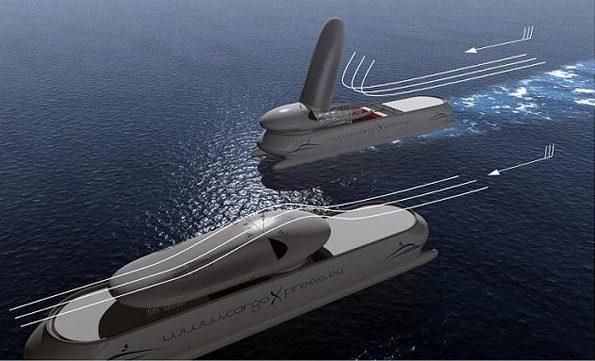
BLUEFISH DEVELOPMENT PROJECT INDEX A-Z
|
CRUISE MISSILES (military version) HORIZON 2020 BID (withdrawn 2014) PATENT (published 17 Sept 2014) |
ROV MINE COUNTERMEASURES (military version) SAM MISSILES - 1/20th scale model (military version) TORPEDOES (military version) |
GENERAL LINKS
https://www.innovateuk.org/-/funding-rules#category
Customer satisfaction and safety
Intermodality and logistics, including ports and inland waterways
A European Research Area (ERA)
Innovation and competitiveness
http://www.2020visionnetwork.eu/sme
http://cordis.europa.eu/fp7/ncp_en.html
| .. |
BLUEFISH DEVELOPMENT PROJECT INDEX A-Z
|
CRUISE MISSILES (military version) HORIZON 2020 BID (withdrawn 2014) PATENT (published 17 Sept 2014) ROV MINE COUNTERMEASURES (military version) |
SAM MISSILES - 1/20th scale model (military version) TORPEDOES (military version) |
This website is Copyright © 2014 Bluebird Marine Systems Ltd. The names Bluebird™, Bluefish™, SeaNet™, Utopia Tristar™ and the blue bird and fish in flight logos are trademarks. The color blue is an essential element of the marks. All other trademarks are hereby acknowledged.
|
BLUEBIRD | BLUEFISH | FORMULA E | SOLARNAVIGATOR | UTOPIA |
